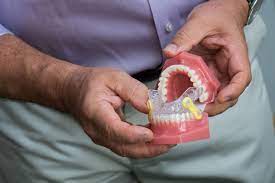Obstructive sleep apnea is a common sleep disorder that affects roughly 39 million people in the United States today. Agreed, there are no cures for this type of sleep condition. However, there are a few treatment options you can try today to manage your condition and prevent apnea events.
Well, the most common option is the non-invasive treatments for OSA. This non-invasive solution comes in five different forms – CPAP, BiPAP, APAP, ASV, and EPAP. In the rest of this post, you’ll discover exactly how each of these treatments works in 2024.
Sleep apnea diagnosis
As mentioned earlier, OSA treatments are available in different types, depending on your condition. To understand your condition, you may need to visit a reputable clinic for sleep apnea diagnosis.
- To get started, a healthcare expert will assess your condition based on the symptoms you experience.
- Physically, the back of your throat, as well as your nose and mouth will be evaluated. Checks will also be carried out to understand your blood pressure.
Sleep tests may also be used to understand the extent of your condition. At the sleep center, your sleep will be monitored with the help of a sleep test, known as polysomnography. This involves the use of equipment to monitor and identify your heart, brain, and lung activities during sleep. This sleep test also checks your breathing patterns and determines your blood oxygen levels.
Non-invasive treatments for sleep apnea
With a sleep apnea diagnosis, your doctor can easily identify your condition and provide you with a personalized treatment plan. In most cases, you’ll be recommended to try any of these non-invasive treatments:
1. CPAP for sleep apnea
Continuous positive airway pressure (CPAP) is the standard treatment for OSA. In most cases, your doctor will first recommend this treatment option if the diagnosis shows your condition is severe or moderate. This machine works by using mild air pressure to keep your upper airways open during sleep.
2. BiPAP
BiPAP means bi-level positive airway pressure. As the name suggests, this non-invasive treatment solution involves the use of a machine that supplies air pressure at two different levels. During inhalation, the BiPAP machine will supply you with a much higher air pressure. However, the machine only supplies little to no air pressure during exhalation.
In most cases, your doctor will prescribe BiPAP only if you’re intolerant to CPAP.
3. APAP
Also known as automatic positive airway pressure, APAP machines work almost the same way as CPAP systems. The biggest difference between these machines is that APAP can help adjust your ventilator’s air pressure settings automatically, depending on your needs.
APAP machines are often recommended for apnea sufferers who struggle to get used to CPAP therapy. The doctor will likely place you on APAP if you currently experience positional apnea or REM-related sleep apnea.
4. ASV
Is your CPAP therapy failing? Do you have a central OSA? Has your BiPAP or CPAP therapy worsened your sleep apnea condition? If yes, then your doctor will likely put you on ASV.
ASV or adaptive servo-ventilation is a type of treatment that’s specifically designed to help release customized air pressure. This machine doesn’t release a specific amount of air pressure. Instead, the air pressure adjusts in anticipation and response to your central apneic events.
5. EPAP
Expiratory positive airway pressure (EPAP) machines are non-motorized systems. These machines often come with two tiny valves, which you can fit inside your nostrils. These valves will help limit airflow to your airways. In addition, they also help to create enough pressure, which will keep them from collapsing. If you’re intolerant to CPAP, your doctor may recommend EPAP if other treatment options fail.
Need help finding the right CPAP or BiPAP machine for sleep apnea? If yes, you can always visit iSleepBetter today to find the right product that falls within your budget.




